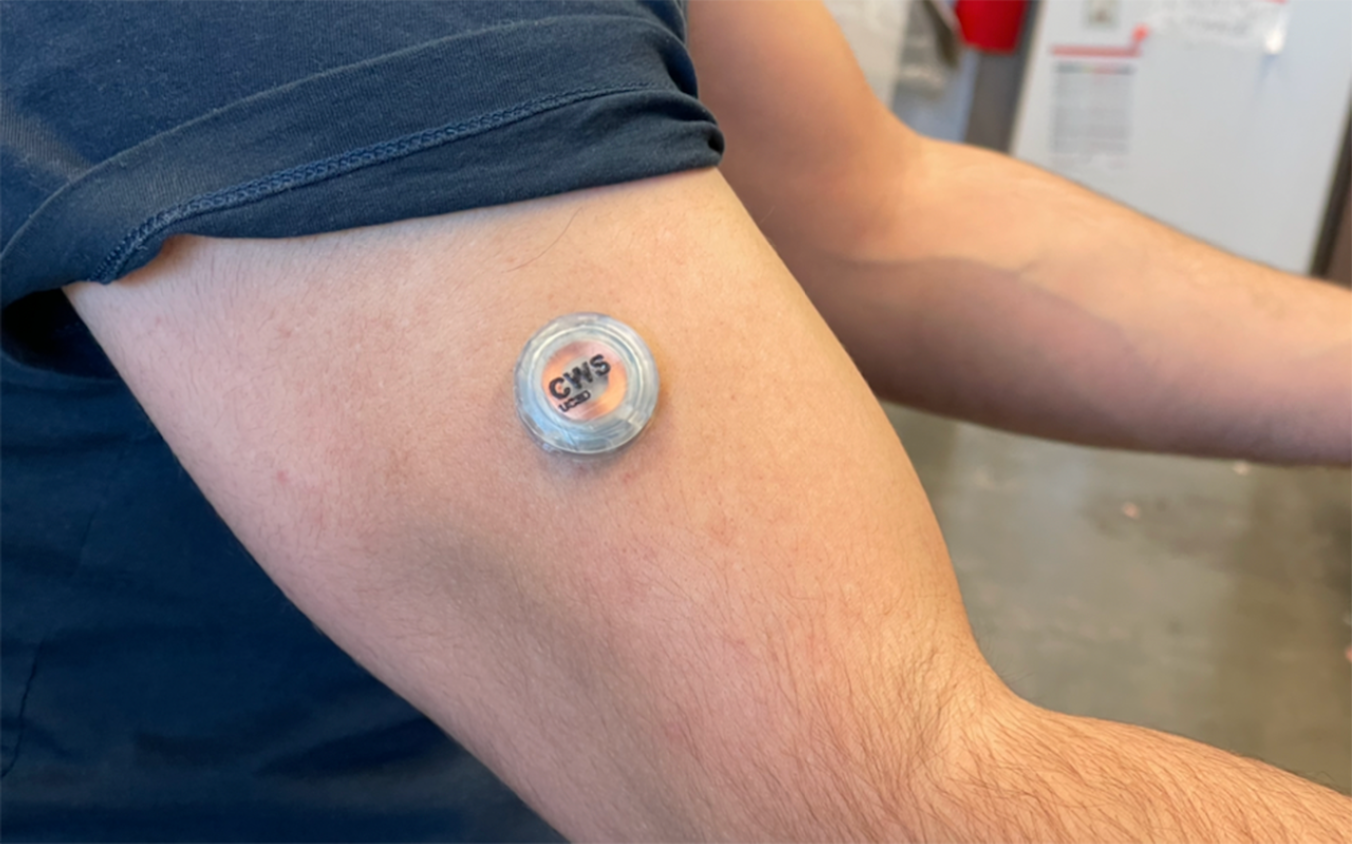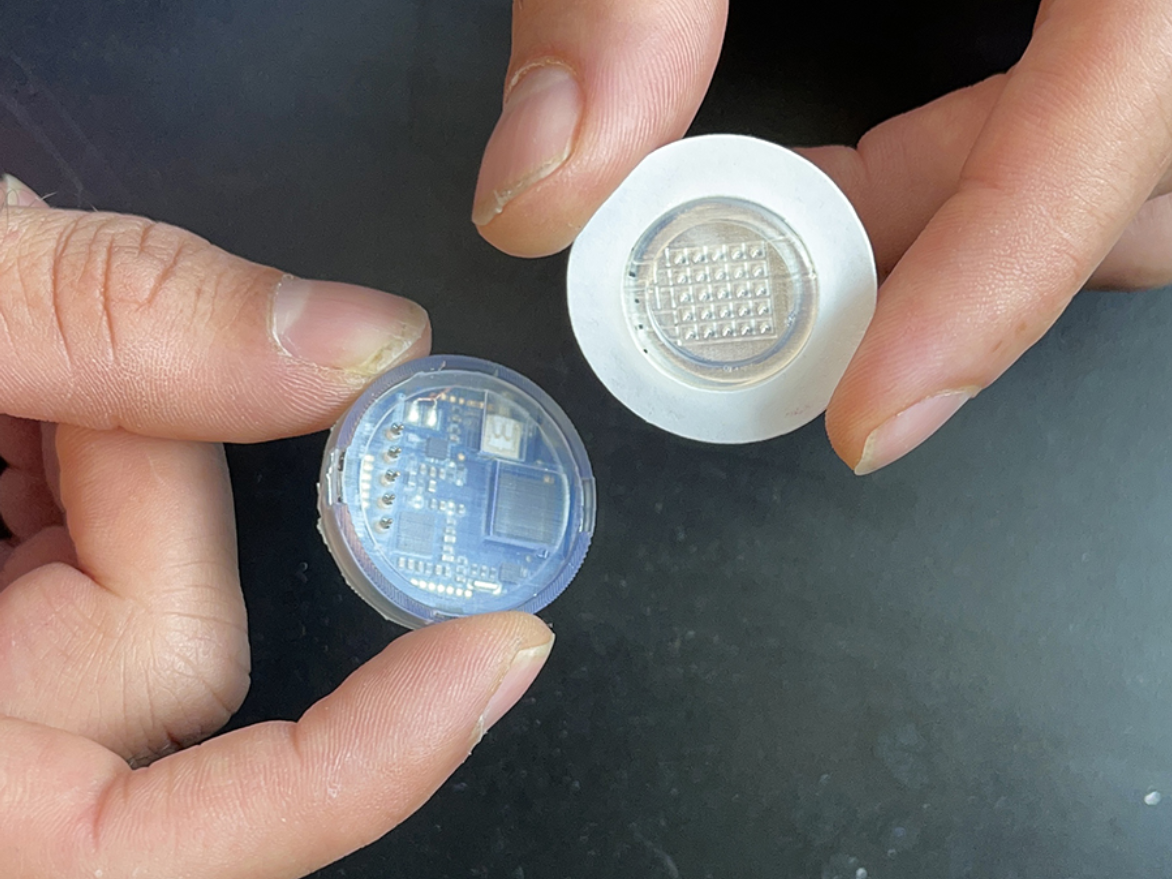Wearable Device for Measuring Multiple Biomarkers Anytime, Anywhere
The University of California, San Diego (UC San Diego) recently developed a portable device that allows users to monitor biomarkers such as blood glucose, alcohol and lactate levels anytime, anywhere. This allows them to track their health status simultaneously in real-time. The research team recently published their work in the journal Nature Biomedical Engineering.
A “Portable Testing Lab” for Continuous Real-time Measurement of Three Biomarkers
Commercially available health monitors, such as continuous glucose monitors commonly used by diabetics, can only measure a single parameter. The research team further thought that if other related biological values could be measured, such as alcohol values for detecting possible hypoglycemia from drinking, and lactate values for monitoring muscle fatigue during exercise, it would be more effective for overall health management.
The device is applied to the skin through a patch of microscopic needles (microneedles), that are each about one-fifth the width of a human hair. Wearing the device is not painful since the microneedles barely penetrate the surface of the skin to sense biomolecules in the fluid surrounding the cells beneath the skin. The device can be worn on the upper arm and sends data wirelessly to a custom smartphone app.
Prof. Joseph Wang from the Department of NanoEngineering, UC San Diego described this device as “a lab on your skin”, which can measure multiple biomarkers simultaneously and continuously, allowing users to monitor their health status anytime, anywhere.

(Photo credit: Department of NanoEngineering, UC San Diego)
Related article: These Two Companies are Helping Push Denmark to the Forefront of Biotech
Combination of Disposable Needle Patch and Electronic Sensor for Wireless Data Transmission
The wearable device consists of a patch of microneedles and an electronic device. The patch is disposable and can be easily separated from the electronic device and replaced with a new one, effectively preventing the electronic device from coming into direct contact with human body fluids. The electronic device is reusable and comes with an electronic detector, a wireless transmitter and a wireless rechargeable battery that can be recharged by placing it on the wireless charging pad of a cell phone or smartwatch. The enzymes on the tip of each microneedle interact with blood glucose, alcohol and lactate in body fluids to generate small signals that are transmitted wirelessly to the sensor and then to a mobile app developed by the research team.

(Photo credit: Department of NanoEngineering, UC San Diego)
The portable device has been tested on five voluntary subjects. They were allowed to exercise, eat and drink freely when using the device. The team found that the device was able to continuously monitor blood glucose, alcohol and lactate values during the trial, and the values obtained were very close to those obtained using commercially available blood glucose meters, breathalyzers and laboratory lactose tests.
The next step of the research will be testing and refining the durability of the microneedle patch and bringing it to the market as soon as possible. The research team has already established a new company, AquilX, to prepare for the subsequent sales process, in the hope of making history in the field of wearable medical devices.
Written by Aurora Mau, translated by Richard Chau
©www.geneonline.com All rights reserved. Collaborate with us: service@geneonlineasia.com








